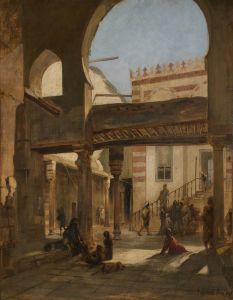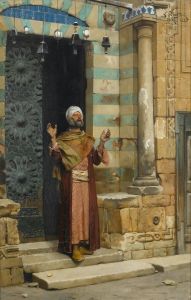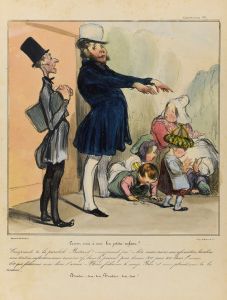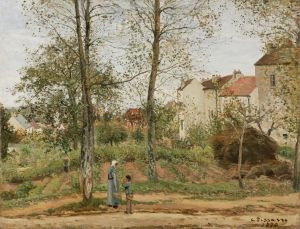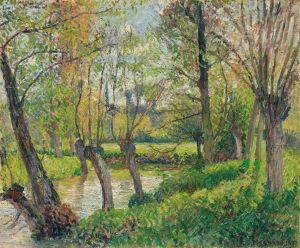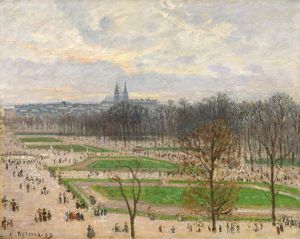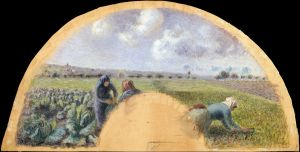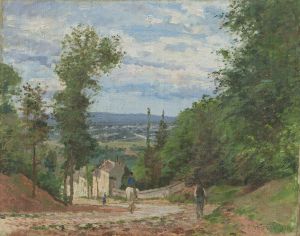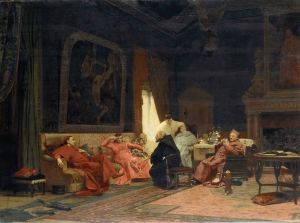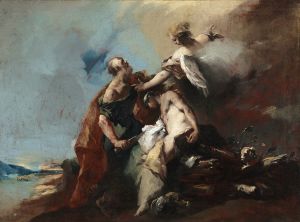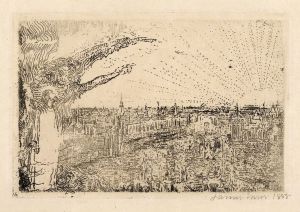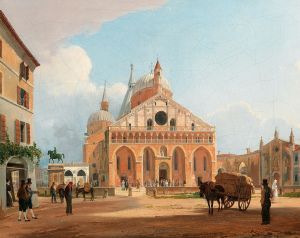
The Church at Eragny
A hand-painted replica of Camille Pissarro’s masterpiece The Church at Eragny, meticulously crafted by professional artists to capture the true essence of the original. Each piece is created with museum-quality canvas and rare mineral pigments, carefully painted by experienced artists with delicate brushstrokes and rich, layered colors to perfectly recreate the texture of the original artwork. Unlike machine-printed reproductions, this hand-painted version brings the painting to life, infused with the artist’s emotions and skill in every stroke. Whether for personal collection or home decoration, it instantly elevates the artistic atmosphere of any space.
"The Church at Eragny" is an oil painting created by the renowned French artist Camille Pissarro in 1884. Pissarro, a pivotal figure in the Impressionist movement, is celebrated for his contributions to landscape painting and his innovative approach to capturing light and atmosphere. This particular work is a testament to his mastery in these areas and reflects his deep connection to the rural landscapes of France.
Camille Pissarro was born on July 10, 1830, on the island of St. Thomas in the Danish West Indies. He moved to Paris in 1855, where he became involved with the Impressionist movement, a group of artists who sought to break away from the traditional approaches of the French Academy. Pissarro was a central figure in this movement, known for his commitment to plein air painting, which involved painting outdoors to capture the natural light and atmosphere of a scene.
"The Church at Eragny" depicts a rural church in the village of Eragny-sur-Epte, located in the Normandy region of France. Pissarro moved to Eragny in 1884, the same year he painted this work, and he lived there for the remainder of his life. The village and its surroundings became a significant source of inspiration for him, and he produced numerous paintings of the area, capturing its changing seasons and rural charm.
In this painting, Pissarro employs his characteristic Impressionist style, using loose brushwork and a vibrant palette to convey the scene's atmosphere. The church is depicted with a sense of tranquility, nestled amidst lush greenery and under a sky rendered in soft, harmonious colors. Pissarro's use of light is particularly noteworthy; he captures the way sunlight filters through the trees and illuminates the church, creating a serene and inviting scene.
Pissarro's choice of subject matter reflects his interest in rural life and the simple beauty of the countryside. Unlike many of his contemporaries who focused on urban scenes and modern life, Pissarro often turned to the pastoral landscapes of France, finding beauty in the everyday and the ordinary. This focus on rural themes is evident in "The Church at Eragny," where the church and its surroundings are depicted with a sense of reverence and appreciation for their natural beauty.
Throughout his career, Pissarro was known for his willingness to experiment and evolve his style. While he remained committed to the principles of Impressionism, he also explored other techniques and movements, including Neo-Impressionism. However, "The Church at Eragny" remains firmly within the Impressionist tradition, showcasing Pissarro's skill in capturing the fleeting effects of light and atmosphere.
Today, "The Church at Eragny" is recognized as an important work within Pissarro's oeuvre and within the broader context of Impressionist art. It exemplifies his ability to convey the beauty of the natural world and his dedication to capturing the essence of a scene through color and light. The painting is held in high regard by art historians and continues to be celebrated for its contribution to the Impressionist movement and its enduring appeal to audiences worldwide.





